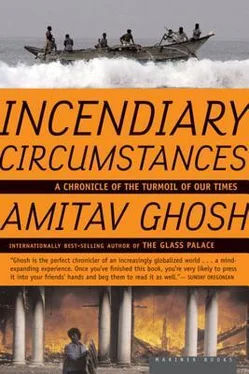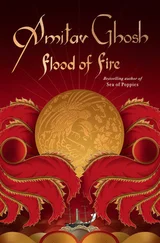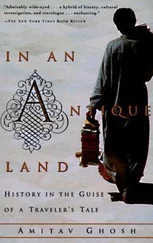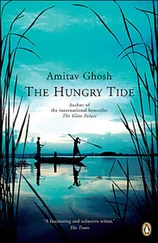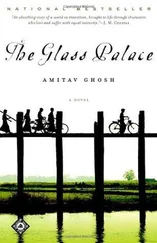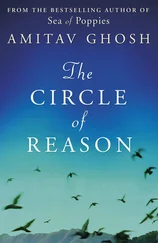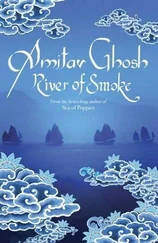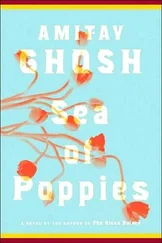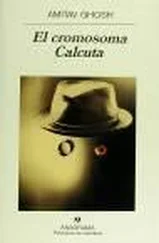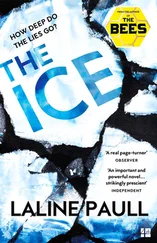The sergeant and his colleagues were teaching a group of Cambodian soldiers professional de-mining techniques. They were themselves trained sappers and engineers, but as it happened, none of them had ever seen or worked in a minefield that had been laid with intent to kill, so to speak. For their Cambodian charges, on the other hand, mines were a commonplace hazard of everyday life, like snakes or spiders.
This irony was not lost on the Bangladeshi sergeant. "They think nothing of laying mines," he said in trenchant Bengali. "They scatter them about like popped rice. Often they mine their own doorstep before going to bed, to keep thieves out. They mine their cars, their television sets, even their vegetable patches. They don't care who gets killed. Life really has no value here."
He shook his head in perplexity, looking at his young Cambodian charges. They were working in teams of two on the minefield, an expanse of scrub and grass that had been divided into narrow strips with tape. The teams were inching along their strips, one man scanning the ground ahead with a mine detector, the other lying flat, armed with a probe and trowel, ready to dig for mines. By this slow, painstaking method, the team had cleared a couple of acres in a month's time. This was considered good progress, and the sergeant had reason to be pleased. Generally speaking, Bangladeshi military units have an enviable reputation in Cambodia and are said to do thoughtful developmental work wherever they are posted, in addition to their duties.
In the course of their work, the sergeant and his colleagues had become friends with several Cambodian members of their team. But the better they got to know them and the better they liked them, the more feckless they seemed, the more hopeless the country's situation appeared. This despite the fact that Cambodians in general have a standard of living that would be considered enviable by most people in Bangladesh or India; despite the fact that Kompong Thom, for all that it has been on the battlefront for decades, is neater and better ordered than any provincial town in the subcontinent. Despite the fact that the sergeant was himself from a country that had suffered the ravages of a bloody civil war in the early seventies.
"They're working hard here because they're getting paid in dollars," the sergeant said. "For them it's all dollars, dollars, dollars. Sometimes, at the end of the day, we have to hand out a couple of dollars from our own pockets to get them to finish the day's work." He laughed. "It's their own country, and we have to pay them to make it safe. What I wonder is, what will they do when we're gone?"
I told him what a longtime foreign resident of Phnom Penh had said to me: that Cambodia was actually only fifteen years old; that it had managed remarkably well, considering it had been built up almost from scratch after the fall of the Pol Pot regime in 1979, and that in a situation of near-complete international isolation. Europe and Japan had received massive amounts of aid after the Second World War, but Cambodia, which had been subjected to one of the heaviest bombings in the history of war, had got virtually nothing. Yet Cambodians had made do with what they had.
But the sergeant was looking for large-scale proofs of progress — roads, a functioning postal system, Projects, Schemes, Plans — and their lack rendered meaningless those tiny, cumulative efforts by which individuals and families reclaim their lives — a shutter repaired, a class taught, a palm tree tended — which are no longer noticeable once they are done, since they sink into the order of normalcy, where they belong, and cease to be acts of affirmation and hope. He was the smallest of cogs in the vast machinery of the UN, but his vision of the country, no less than that of the international bureaucrats and experts in Phnom Penh, was organized around his part in saving it from itself.
"What Cambodians are good at is destruction," he said. "They know nothing about building — about putting things up and carrying on."
He waved good-naturedly at the Cambodians, and they waved back, bobbing their heads, smiling, and bowing. Both sides were working hard at their jobs, the expert and the amateur, the feckless and the responsible: doughty rescuer and hapless rescued were taking their jobs equally seriously.
Later I got a ride with an Austrian colonel in an UNTAC car, a white, air-conditioned Land Cruiser. He was a small, dapper, extremely loquacious man. He'd spent most of his working life on UN missions; he rated the Cambodia operation well above Lebanon, a little below Cyprus. But he was still planning to get out of Kompong Thom — too much tension, too many shells overhead.
We stopped to pick up a Russian colonel, a huge man, pear-shaped, like a belly dancer gone to seed. His khaki shorts looked like bikini briefs on his gigantic legs.
The Russian reached for the radio, which was tuned to the UNTAC radio station, and turned it off. "Yap, yap, yap, yap," he said, glaring at the Austrian.
The Austrian shrank back, but plunged into battle a couple of minutes later, mustache bristling. "I like that station," he cried. His voice was high, terrier-like. "I like it, I want to listen to it."
The Russian jammed a tree stump of a knee across the radio and looked casually out the window. The Austrian snatched his hand back, but his defeat was only temporary. He turned to look out the window and sighed. "Such a beautiful country," he said, "such wonderful people — always smiling. But why are they always at war? Why can't they get on with building their country?"
He grinned at the Russian. "I suppose we'll be going to Russia next — eh, my friend?"
The Russian sprang bolt upright, sputtering. The veins on his temples bulged. "No," he barked, "no, not Russia, never, maybe Ukraine… But not Russia, never."
Then a truck appeared on the road ahead of us, gradually taking shape within a cloud of dust. It was packed with people, many of whom seemed to be wearing olive-green fatigues. A man was leaning over the driver's cabin, looking directly at us: he had an unusual-looking cap on his head. It was green and looked Chinese, like something a Khmer Rouge guerrilla might wear. The Russian and the Austrian were suddenly on the edge of their seats, straining forward.
The truck went past in a flurry of dust, the people in it waved, and we got a good look at the cap. There was lettering on it; it said "Windy City Motel."
7
I got blank stares when I asked where Pol Pot's village was. Pol Pot had villages on either side of Route 12, people said, dozens of them; nobody could get to them, they were in the forest, surrounded by minefields. I might as well have asked where the State of Cambodia was. Nor did it help to ask about Saloth Sar; nobody seemed ever to have heard of that name.
One of the people I asked, a young Cambodian called Sros, offered to help, although he was just as puzzled by the question as everybody else. He worked for a relief agency and had spent a lot of time in Kompong Thom. He had never heard anybody mention Pol Pot's village and would have been skeptical if he had. But I persuaded him that Pol Pot was really called Saloth Sar and had been born near the town; I'd forgotten the name of the village, but I had seen it mentioned in books and knew it was close by.
He was intrigued. He borrowed a scooter and we drove down the main street in Kompong Thom, stopping passersby and asking respectfully, "Bong, do you know where Pol Pot's village is?"
They looked at us in disbelief and hurried away: either they didn't know or they weren't saying. Then Sros stopped to ask a local district official, a bowed, earnest-looking man with a twitch that ran all the way down the right side of his face. The moment I saw him, I was sure he would know. He did. He lowered his voice and whispered quickly into Sros's ear. The village was called Sbauv, and to get to it we had to go past the hospital and follow the dirt road along the River Sen. He stopped to look over his shoulder and pointed down the road.
Читать дальше
